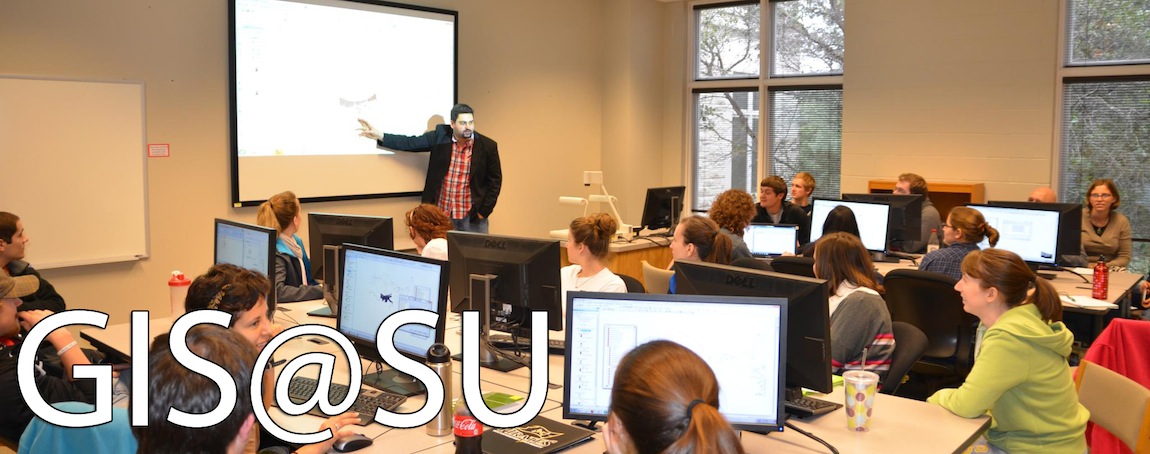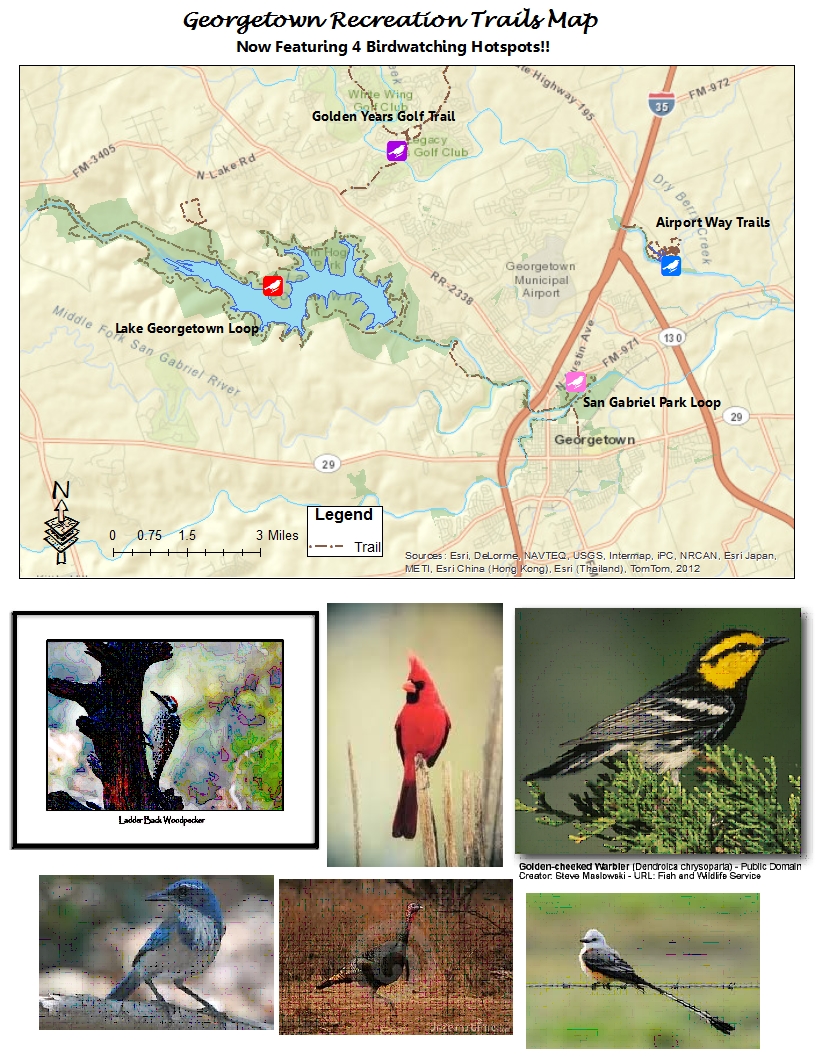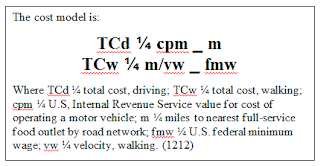Monday, November 19, 2012
Monday, November 12, 2012
To Swim or Not to Swim?
Though winter will soon be here in
Georgetown, it is never bad to think ahead! In this map I looked at parks relatively
close to Southwestern University and if the parks permitted swimming or not. To
do this I took data from the Georgetown Parks and Recreation website and used
it to determine what the rules regarding swimming are in each park. I then
narrowed down the search just to parks that are both close to Southwestern and
have a viable water source to swim in during the warmer months. The Landrum
Memorial Fountain on campus will always be a mystery as there is no evidence
either condoning or condemning swimming in it.
Wednesday, November 7, 2012
Everything's BIGGER in Texas, Especially Chicken Consumption...
Since being a student at
Southwestern University and becoming a semi-permanent resident of Georgetown, Texas,
I have come to realize that the large majority of fast food restaurants around
the area serve quite a lot of chicken. Before, as a Californian native and
resident, I have never seen so much chicken available to us, human consumers;
yet, of course, this could just be because I have never come to recognize the
abundance of chicken in fast food establishments until now. However, I still
feel like hearty meals of chicken are much more greatly sought after out here
in Texas than my home of California. I mean, seriously, there are five fried
chicken fast food restaurants in the relatively small Georgetown area that sell
almost solely chicken meals to consumers: two Golden Fried Chicken restaurants,
a Bush’s Fried Chicken restaurant, a Wingstop, and a Kentucky Fried Chicken. Let
alone the other 30-something fast food restaurants that also sell some amount chicken
in their menus within this area. Back in my hometown of Garden Grove, we only
had Kentucky Fried Chicken to supply for this obvious human desire for glorious
chicken meat, yet that one main distributor of chicken seemed to be enough for
our town. I believe that southern culture has become accustom to love the
eating all kinds of chicken, in which the city of Georgetown, and many other
southern cities, are attributed with. Therefore, the fast food restaurants of
the area hold true to this cultural characteristic and help provide for the
high demand that comes with this southern obsession for eating chickens. For within
our capitalistic society the following is true: the higher public demand for a
product, the greater availability of that product.
In this observation and belief is
where I was inspired to make this map of the majority of fast food restaurants who
server chicken in the city of Georgetown that I, and many other students of SU,
are bound to find or have found ourselves at frequently to feast. This map has
geocoded the addresses of these restaurants, labeling them throughout this map
of Georgetown with little chicken heads. As you can see from the legend: the
largest heads represent those fast food restaurants that sell almost solely
chicken (Golden Fried Chicken, KFC, etc.), the middle sized chicken head represents
those restaurants whose menus sell a majority of chicken entrées compared to
other options (McDonalds, Jack in the Box, etc.), and the smallest chicken head
show those restaurants that sell a minority of chicken entrées from their menus
(Dairy Queen, Schlotzky’s, etc.). I had received this fast food restaurant
information from the Yellow Pages website, and the menu information came from
the restaurant’s websites. This map gives a good representation of the
magnitude of chicken being sold and consumed constantly in the city of
Georgetown. My hopes for this map are to raise human awareness of this
over-consumption of these plump, flightless birds; and, with that, help people
to realize the variety of negative effects that this intensive demand and
over-consumption has on the chickens, human beings, and the entire world. I
love eating chicken just as much as the next person, however I have always been
one to be wary of glutinous indulgence; as such I try to follow an ethic of moderation
and I wholeheartedly recommend this lifestyle choice to everyone who views my
map.
Monday, October 22, 2012
Speed Limits in Georgetown, Texas
The map above shows the various speed limits throughout Georgetown. If you look closely at the map you will see that the color most visible is a red orange, which is equal to 30 mph. There are over three thousand roads that have a speed limit of 30 mph.
This map was influenced by the maps from a website called http://www.itoworld.com/map/124, that has the entire world mapped and most major streets and what their speed limits are.
Wednesday, October 10, 2012
Most Dangerous Areas for Assault in Georgetown
The Georgetown PD website had a link to a website (http://myneighborhoodupdate.net/) that mapped out the locations for various types of police reports. I looked specifically at the "violent" category and took only the data for assaults. There were a total of 126 assaults. I had to do some manipulation in excel to make it ready for ArcMap, but once I did that, it was easy to geocode the addresses provided for the assaults.
After geocoding, I changed the symbology of the data to show graduated symbols based on the number of police car responders. In ranking the severity of the assaults, I assumed that the number of police cars at the scene correlated to the relative severity of the incident. There definitely appears to be some clustering of assaults, especially with more severe assault incidents.
Georgetown Recreation Trails Map
Hotspot #1 – Lake Georgetown Loop (red)
Location: Lake Georgetown- Russell Park, Williamson
County, Texas, US
Date of Effort: May 27, 2012 11:00 AM
Species: 23 total
4 Wild Turkey
1 Neotropic Cormorant
2 Black Vulture
4 Turkey Vulture
2 Mourning Dove
3 Yellow-billed Cuckoo
2 Ladder-backed Woodpecker
1 Eastern Wood Pewee
1 Yellow-bellied Flycatcher
6 Scissor-tailed Flycatcher
3 White-eyed Vireo
4 Carolina Chickadee
8 Black-crested Titmouse
12 Bewick’s Wren
2 Carolina Wren
4 Northern Mockingbird
4 Golden-cheeked Warbler
2 Summer Tanager
6 Northern Cardinal
3 Blue Grosbeak
4 Painted Bunting
6 Red-winged Blackbird
2 Lesser Goldfinch
Hotspot #2 – San Gabriel Park Loop (pink)
Georgetown – San Gabriel Park, Williamson County, TX, US
Date of Effort: August 31, 2012 7:00 AM
Species: 14 (+2 other taxa) total
20 goose sp.
3 Egyptian Goose
10 Mallard duck (domestic)
1 Great Egret
1 Red-Shouldered Hawk
10 White-winged Dove
2 Northern Flicker
2 Eastern Phoebe
2 Blue Jay
3 Carolina Chickadee
1 Northern Mockingbird
5 European Starling
1 Common Yellowthroat
2 Northern Cardinal
1 Baltimore Oriole
2 Lesser Goldfinch
Hotspot #3 – Airport Way Trails (blue)
Georgetown-Berry Springs Park, Williamson County, TX, US
Date of Effort: October 18, 2010
Species: 20 total
Killdeer
White-winged Dove
2 Great Horned Owl
1 Barred Owl
1 Red bellied Woodpecker
1 Ladder-backed Woodpecker
1 Downy Woodpecker
American Crow
Carolina Chickadee
Black-crested Titmouse
1 Golden-crowned Kinglet
Ruby-crowned Kinglet
2 Eastern Bluebird
1 Northern Mockingbird
European Starling
American Pipit
Yellow-rumped Warbler
1 Vesper Sparrow
Great-tailed Grackle
House Sparrow
Hotspot #4 – Golden Years Gold Trail (purple)
Sun-City-Legacy Hills Park, Williamson County, Texas, US
Date of Effort: July, 18 2012
Species: 21 Total
4 Mallard (duck)
2 Green Heron
1 Yellow-crowned Night-Heron
12 Black Vulture
1 Killdeer
1 Mourning Dove
1 Yellow-billed Cuckoo
1 Belted Kingfisher
1 Red-bellied Woodpecker
1 Eastern Phoebe
1 Great Crested Flycatcher
1 Scissor-tailed Flycatcher
2 Blue Jay
1 Carolina Chickadee
1 Bewick’s Wren
1 American Robin
25 Northern Mockingbird
1 Summer Tanager
2 Northern Cardinal
2 Lesser Goldfinch
Vegetation in Georgetown
I wanted to make these maps because I wanted to know what types of vegetation are found in Georgetown, Texas and get a sense of what sort of ecosystem we have built this city in. While driving to the movies, Walmart, or HEB I see large groups of deer and occasionally a raccoon or two walking in the parking lot or road, I wanted to get a feel of where in Georgetown there was still open ground for wild animals such as these. The first map shows where different types of vegetation are found. The second map shows where in Georgetown you can find open space such as parks where development hasn't completely taken over vegetation. Much of the forest and grassland area has been enveloped in development, this map gives a since of nostalgia of what use to and could be. To make this map I got data of where parks and open space is, city blocks are, rivers and streams are, lakes are, and different types of vegetation is, from wilco.org. The map shows that the most open space that is not personal property is found in West Georgetown surrounding Georgetown lake, with a few enclaves around downtown.
Religious Proximity of Georgetown
This is a depiction of the distances between all of the "religious" addresses which are within Georgetown typical boundaries. The cross symbols represent a religious structure, which is differentiated from a church or religious place of worship by Wilco, and their distance relative to one another is represented by the red-blue spectrum. There is clustering near the center of Georgetown while there are few religious structures near the rural, outskirts of the city. This type of geographic pattern most likely correlates with the city's population density as well as its most traffic-heavy roads. Some possible biases that may be present in this map include the city's boundaries (which could be limiting the number of addresses near the boundaries) and the ambiguous word "religion" used to geocode these addresses that were contained within the shapefile.
Data retrieved from:
http://wilco.org/CountyDepartments/GIS/Data/tabid/532/Default.aspx
Data retrieved from:
http://wilco.org/CountyDepartments/GIS/Data/tabid/532/Default.aspx
Lake Georgetown
 Lake Georgetown is a typical
highland type reservoir with steeply sloping banks covered with limestone rock.
Because of water fluctuations aquatic vegetation has a hard time establishing
itself. A moderate amount of standing timber can be found in the backs of coves
and along some shoreline areas, but most cover/structure is in the form of rock
ledges and boulders. In response to the lack of natural vegetation, cedar-tree
fish attractors have been added to provide additional structure. They were
placed by TPWD in cooperation with the Army Corps of Engineers and the Sun City
Hunting and Fishing Club. Most attractors are placed on key structure spots
including drop-offs, humps and roadbeds. Black bass, crappie and sunfish use
the attractors for cover. Fishermen may use GPS in conjunction with a fish
finder to locate these structures.
Lake Georgetown is a typical
highland type reservoir with steeply sloping banks covered with limestone rock.
Because of water fluctuations aquatic vegetation has a hard time establishing
itself. A moderate amount of standing timber can be found in the backs of coves
and along some shoreline areas, but most cover/structure is in the form of rock
ledges and boulders. In response to the lack of natural vegetation, cedar-tree
fish attractors have been added to provide additional structure. They were
placed by TPWD in cooperation with the Army Corps of Engineers and the Sun City
Hunting and Fishing Club. Most attractors are placed on key structure spots
including drop-offs, humps and roadbeds. Black bass, crappie and sunfish use
the attractors for cover. Fishermen may use GPS in conjunction with a fish
finder to locate these structures.
Lake
Georgetown has three boat ramps, all of which are located near the fish
attractors.
Restrooms
|
Parking
|
Courtesy Docs
|
Picnic Area
|
Camping
|
|
Cedar Breaks Park
|
Y
|
Y
|
Y
|
Y
|
Y
|
Jim Hogg Park
|
Y
|
Y
|
Y
|
Y
|
Y
|
Russell Park
|
Y
|
Y
|
Y
|
This Data was collected from the TPWD website, and the Wilson County website
Links for more information:
http://www.tpwd.state.tx.us/fishboat/fish/recreational/lakes/georgetown/
GTography: Georgetown Bike Trails
 | ||||||||||||||||
| Because I made a map in a previous lab depicting the "Top 10 Biker
Friendly Cities" in the U.S., I figured a local portrayal of bike routes
in Georgetown would compliment the national version nicely. The data
was collected from the Williamson County Maps and GIS website (http://www.wilco.org/CountyDepartments/GIS/tabid/454/language/en-US/Default.aspx ), then extracted and exported into ArcMaps. Exported data included the
open/park areas, trails, and roads, and the block census of Williamson
County. I then selected the Georgetown area, then parks and open areas
specifically with the data provided, to hone in on the area of most
importance (that of which encompassed the bike trails in closest
proximity to Georgetown). This map indicates designated trails outlined
in red and named by the corresponding areas they encompass/bisect. With
this map, bikers can take advantage of the trails offered in the city,
while also mapping out their own routes and finding connecting roads to
each of the trails. |
Fun with Veggies in Williamson County
Looking to try your hand at a green-thumb or add flavor to your culinary experiences with some fresh-from-the-backyard vegetables? As it turns out, Georgetown has the capacity to provide you with a plentiful supply of toil-ready soil and vegetation for farming and horticulture. Despite the arid, hot, humid, and generally miserable summers, Georgetown soils are classified by the NRCS soil classification system as generally being 'suitable for farming' with the addition of some water.
So, it's time to throw down some peat moss and plant those seeds, because now there is no excuse to get your hands a little dirty!
According to the map, the county has done an excellent job utilizing the best soil for crops, but Georgetown, in particular, has abundant loamy soil despite being nearest in proximity to urban covered land. It is an oasis in a sea of barren soil and dry grass lands that have taken over the surrounding county. Midst the long-hanging, allergy-inducing oak forests, you could farm in your own backyard. Even Southwestern University has their own community garden and participates in the Georgetown Farmers Market, which gathers fellow fruit fanatics from across town to the areas around Williams Road. With just a dash of water, a myriad of vegetables and herbs could be at your finger tips.
According to the map, the county has done an excellent job utilizing the best soil for crops, but Georgetown, in particular, has abundant loamy soil despite being nearest in proximity to urban covered land. It is an oasis in a sea of barren soil and dry grass lands that have taken over the surrounding county. Midst the long-hanging, allergy-inducing oak forests, you could farm in your own backyard. Even Southwestern University has their own community garden and participates in the Georgetown Farmers Market, which gathers fellow fruit fanatics from across town to the areas around Williams Road. With just a dash of water, a myriad of vegetables and herbs could be at your finger tips.
Monday, October 8, 2012
What is a Food Desert?
This article
discusses the correlation between the locations of grocery stores with healthy
food, compared to the locations of non-grocery stores that sell unhealthy food
and how close they are to resident’s homes. Unhealthy eating habits have been
at an increase since people started realizing how “fat” Americans were becoming
and the up rise in childhood diabetes. When research was conducted on the small
town of Lawrence, Kansas, it was found that there are many cities in the U.S where
there are no grocery stores within a 5 mile radius of people’s homes. These
places are considered to be a “food desert’s” [which] is the name established
for specific locations with “poor access to affordable, healthful food” (1210).
There are stores such as gas stations or food outlets in these areas, but the
food offered is not of significant nutritional value.
Other factors that were
considered in this study were the modes of transportation used to get from the
people’s homes to the food source location. Divided into four groups were
people who walked, people who took public transportation, people who were
driven and people who drove themselves. The conclusion the scientists came to
when factoring in modes of transportation was that the “extent of the food
desert is very different for people who travel on foot, by public
transportation, and by private automobile as is the scale and time of their
journey”(1215). And depending on the
type of transportation used there were limiting factors: if you were walking
you can only carry so many bags of groceries, if you rode the bus you were also
limited by the amount of groceries you could take, if you had a ride you were
limited by the amount of time the person had available to take you to the store
and what you were able to get, and if you had your own car you had to pay for
gas meaning less money for food.
Specifically for
this study “a cost model was created to calculate the cost variation between
the distance from the stores, the mode of transportation, and income” (1212). Using the data calculated by this
cost model, the researchers were able to conclude that there are many factors
that limit how close healthful food is to a particular area. Factors such as
income level, the amount of people that own vehicles, and location of the city
all contribute to the lack of healthy food.
Works Cited
Lucious
F. Hallett IV, D. M. (2010). Qantifying the Extent and Cost of Food Deserts in
Lawrence, Kansas, USA. Applied Geography, 1210-1216.
Subscribe to:
Posts (Atom)












